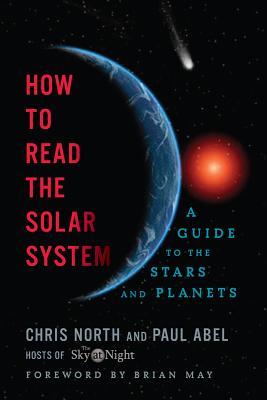 |
| Pegasus Books |
Chris North
Paul Abel
2014
The Summary
"What exactly is the solar system? We've learned the basics at school, but do we really understand what we are seeing in the night sky? Expert astronomers Chris North and Paul Abel provide a fascinating guided tour of our solar system and explain its many wonders.
"They at all the major players including our more familiar cosmic neighbors--the sun, the planets, and their moons--as well as the occasional visitors to our planet--asteroids, meteors, and comets--in addition to the distant stars and what might lie beyond our solar system, including the mysterious Earth Mark II. North and Abel recount the history of how our solar system came to be and decipher the myths that once shaped our astronomy.
"Through their cogent explanations of the latest scientific discoveries, they reveal how any amateur astronomer can view and interpret the solar system and enrich their understanding of our universe."
The Good
I'm actually really glad I finished How to Read the Solar System, because it offered me insight into the solar system that I certainly didn't have prior to reading North and Abel's book. While it is a bit dry and quite dense, I should point out that it's not a bad book.
I learned something interesting about each of the planets and a whole assortment of facts about dwarf planets, the Sun, comets and asteroids, and more, which was one of the most important aspects of reading this book.
For instance, I learned that Io, one of Jupiter's many moons, has boasted volcanic activity (specifically cryovolcanic activity, since it's an icy wasteland); sound waves travel faster through plasma, which gives scientists the opportunity to measure the internal activity of the sun (since it's made up primarily of plasma); and meteor showers are essentially the debris left behind by commets, like a dust storm that the Earth passes through during its orbit. It's fascinating, really.
While How to Read the Solar System isn't a book I would read twice, it's a vast well of information that's sure to hold appeal for readers who greatly enjoy science, astronomy, technology, and even mathematics. It's definitely worth checking out, especially if you're curious about the solar system and the explorations humankind has made into space thus far.
More importantly, it gets an added bonus point in my book for having an index. I was able to easily look up the most intriguing bits of information if I didn't feel like skimming.
The Bad
I will admit, I was sometimes bored with this book. Like terribly bored, so bored that when I read it at night I fell asleep within a few minutes. Don't get me wrong, it's not a bad book by any means, but I simply lost interest when the authors went into too great a detail.
Like when they explained how amateur astronomers should find a specific location in space, like how to find a particular moon by Jupiter, or which filter to use use in order to observe the sun (helpful, if I understood where one might find such filters. Or if my telescope worked properly), or pinpointing the exact degree to which one might adjust a telescope to find Venus.
I'll be honest, if it didn't directly link to me in some way, I found myself losing interest. Quickly.
The Ugly
I wish How to Read the Solar System had had more pictures and photographs to share. I would have loved some full color photos from the universe, depicting images from deep in space or shots of auroras or pictures of the planets and the Sun. It was a little dull without them.
No comments:
Post a Comment